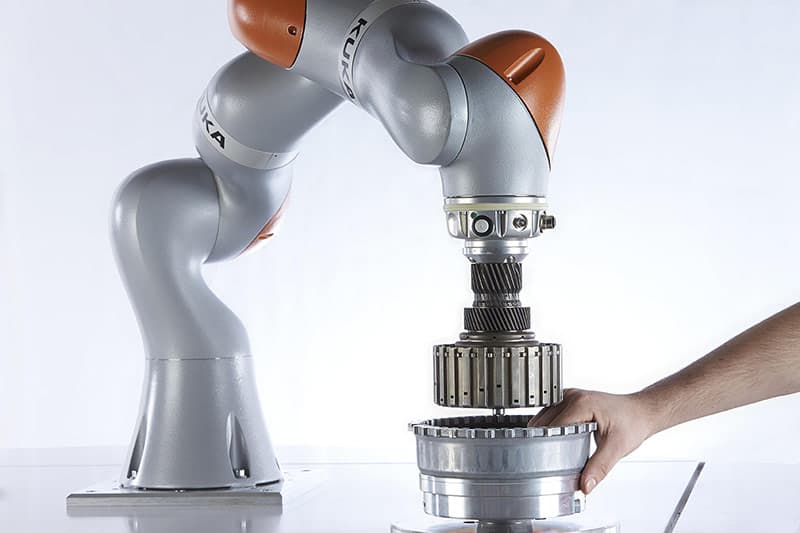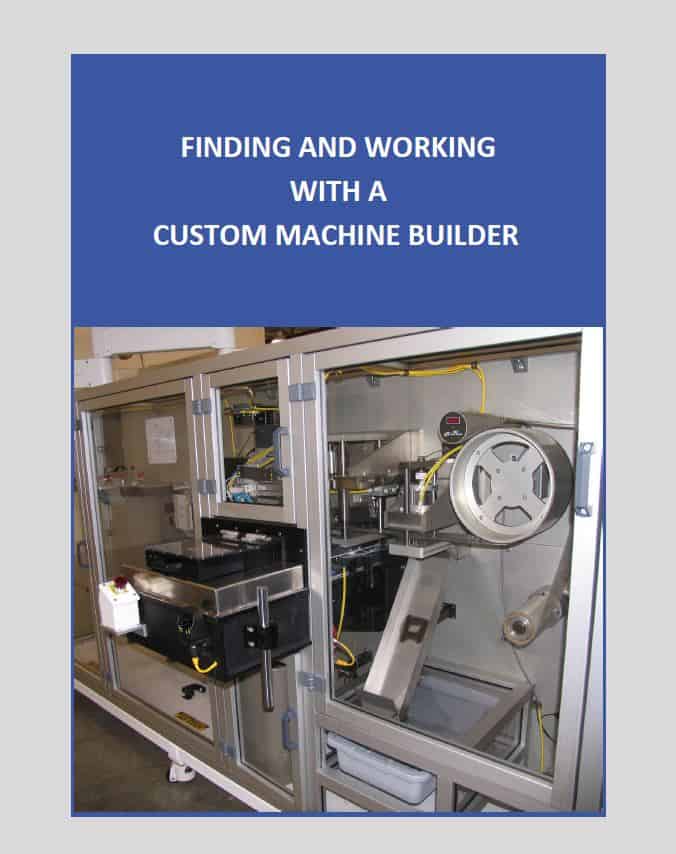- Forced limited collaborative robots have changed the rules of the game in manufacturing.
- Barrier-guarded work zone method keeps workers and industrial robots separated by a physical barrier whenever the robot has power applied.
- Safety-monitored stop, hand guiding, speed, and separation monitoring, and power and force limited methods all allow worker-robot collaboration to varying degrees.
For over 30 years, Keller Technology Corporation (KTC) has
integrated robotics with custom machinery to provide automation solutions in a variety of customer applications, including medical systems. Recent technological developments, such as force limited collaborative robots, have changed the rules of the game and allow our engineers to safely deploy industrial robots in new ways. KTC engineers use five main methods to fulfill the requirements of our customer’s most challenging applications:
1. Barrier-Guarded Work Zone
This method keeps workers and robots separated whenever the robot has power applied. Human and industrial robot collaboration is prevented by a physical barrier. Safety-rated components, including fences, gates, switches, light-curtains, laser scanners, and pressure-sensing mats, can be utilized to immediately shut off power to the robot if the robot’s work zone is breached.
Note: The remaining four ways to safely integrate a robot allow for varying degrees of collaboration between the robot and humans. ISO and RIA Safety Standards define the requirements for each method, whether used for medical applications or other industrial equipment, and a system safety assessment, by trained engineers, is a requirement.
2. Safety Monitored Stop
This method uses safety-rated sensing devices to detect when a human enters the robot’s work zone, with the robot controller quickly stopping the robot arm’s motion. Power to the robot is maintained and once the worker leaves the monitored area, the robot picks up where it left off. This method may save significant system downtime and almost all current, industrial robots can be used in this manner for a variety of applications.
3. Hand Guiding
Typically, this method is used for teaching the robot paths for applications, such as dispensing, cutting, polishing or welding. It can also be employed in applications where the robot is being used by an operator as a lift assist. External devices, joysticks switches, and E-Stops are used by the operator as robot inputs. The operator visually guides a standard industrial robot arm at a safe, limited speed.
4. Speed and Separation Monitoring
This is a relatively new application of robot and human collaboration in manufacturing. This method utilizes a standard industrial robot with optional safety software and equipment. The system requires sophisticated sensors or cameras to continually monitor an operator’s position. When a human is in a defined work zone shared with the robot, the robot may stop completely or reduce its speed and reach. When all zones are clear of operators, the robot can move at full speed and range of motion.
5. Limited Power and Force
This final method uses one of the newer “collaborative” robots. Because of the robot’s inherent capabilities, it is selected when physical contact between the human operator and the robot is beneficial to the process. The entire robotic system, including the robot arm, end effector and peripheral equipment, must be engineered to operate within the parameters of TS 15066. All collaborative robots are not created equal. They have significantly different capabilities and programming methods. They also utilize different technologies to limit their speed and the force. Engineers designing end effectors and system components may utilize rounded corners or elastomeric padding to increase the surface area and lower the maximum contact force the robot can exert on a human being.
Keller Technology Corporation works closely with many of the world’s top
robot manufacturers to integrate both standard and collaborative industrial robots using all of these methods. The pace of technological development has never been faster, and we are excited to see what the future holds.







